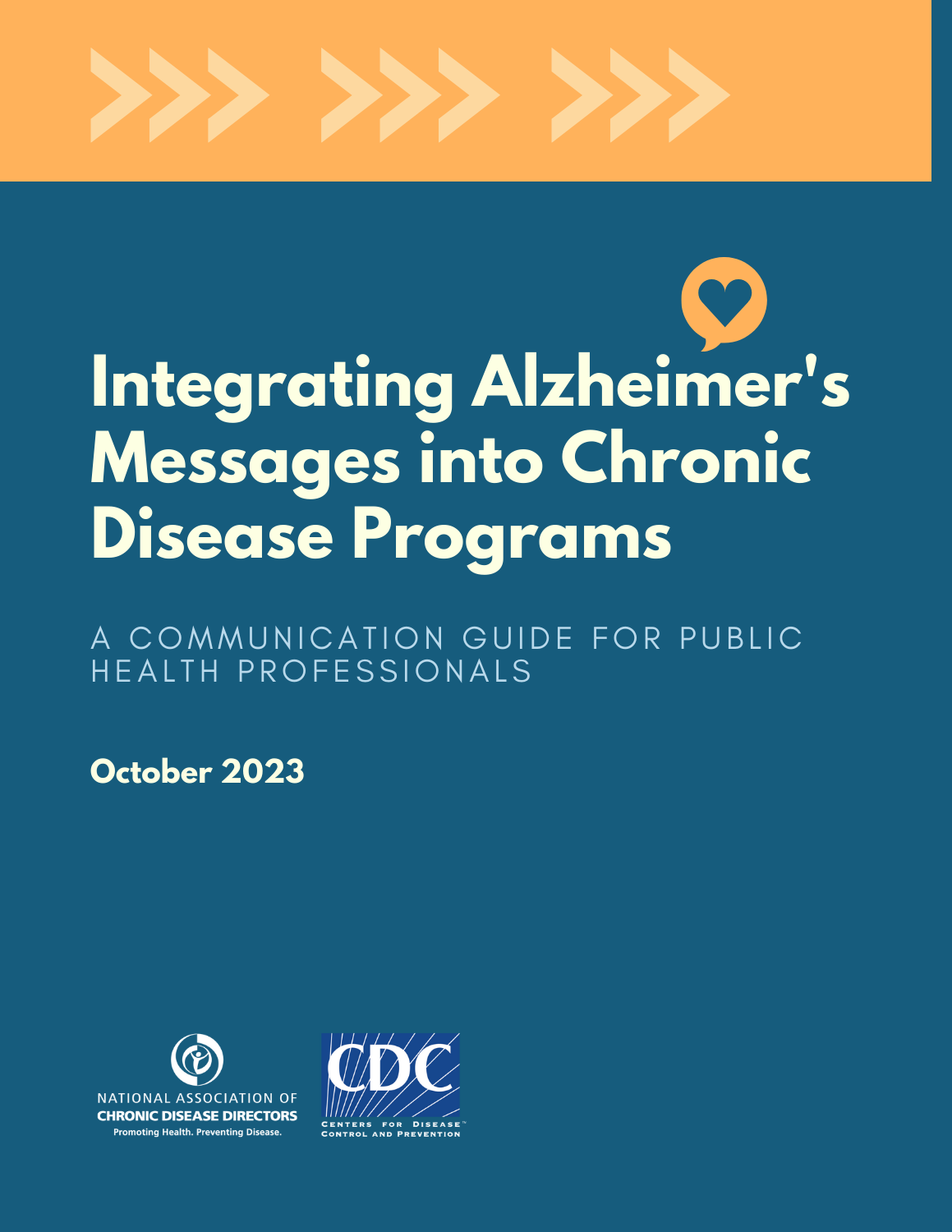NACDD and CDC’s new Integrating Alzheimer’s Messages into Chronic Disease Programs Communication Guide supports public health professionals as they use risk reduction resources and suggestions in the Guide to integrate messages about brain health into chronic disease risk reduction programs. Risk reduction resources are now available to address blood pressure, blood sugar, nutrition, physical activity, hearing impairment, sleep, and traumatic brain injury.
Studies have shown that healthy lifestyle traits may substantially reduce the risk of Alzheimer’s disease and other related dementias (ADRD). People could prevent or delay up to 40% of ADRDs by modifying risk factors such as hypertension, hearing impairment, physical inactivity, diabetes, traumatic brain injuries, and others.[i]
Together, public health professionals can help prevent or delay the occurrence of cognitive decline by recognizing that chronic diseases are also risk factors for ADRD and by expanding current chronic disease risk reduction messages to include brain health. According to the Alzheimer’s Association, 6.7 million Americans age 65 and older are living with Alzheimer’s. Because of the increasing number of people age 65 and older in the United States, particularly those age 85 and older, the annual number of new cases of Alzheimer’s and other dementias is projected to double by 2050.[ii]
For more information about Alzheimer’s disease and risk reduction resources, visit NACDD’s Healthy Aging program.
[i] Lancet 2020; 396: 413–46 https://doi.org/10.1016/S0140-6736(20)30367-6
[ii] Alzheimer’s Facts and Figures, 2023.

